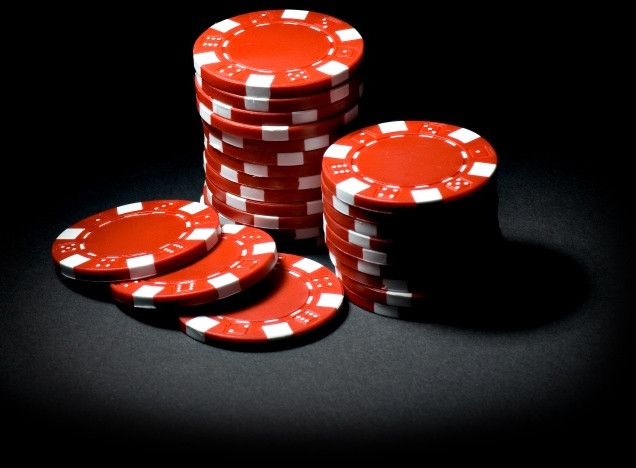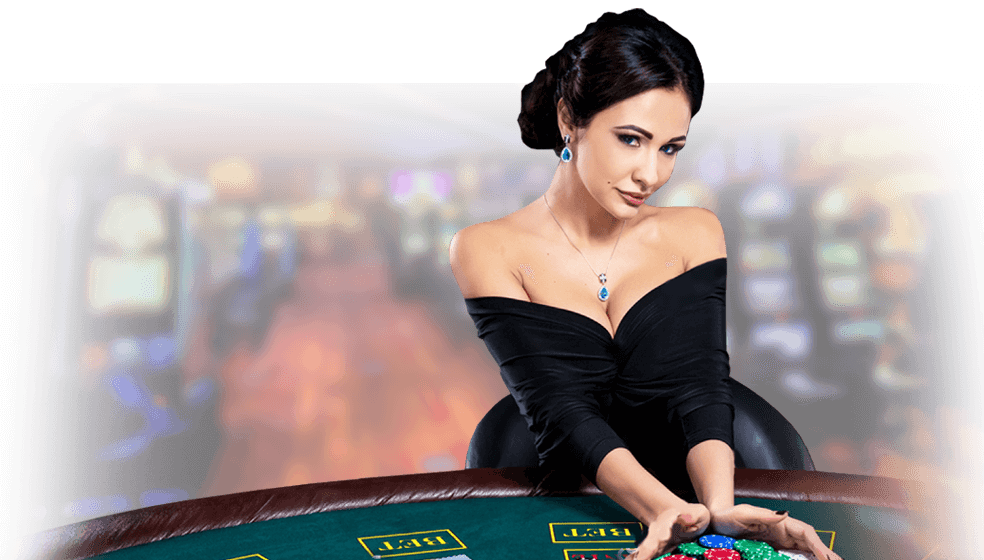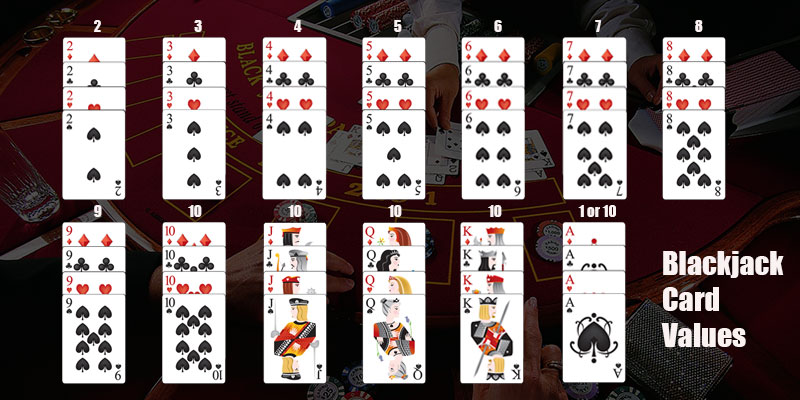- The Reviews
- UNIBET Review 2025
- MANSION Review 2025
- BETSAFE Review 2025
- BWIN Review 2025
- BETSSON Review 2025
- JETBULL Review 2025
- WILLIAM HILL Review 2025
- BET-AT-HOME Review 2025
- ZET Casino Review 2025
- CASINO.com Review 2025
- Mr GREEN Review 2025
- 888 Review 2025
- VEGAS CASINO ONLINE Review 2025
- LAS-VEGAS USA Casino Review 2025
- SUN PALACE Casino Review 2025
- ROYAL ACE Casino Review 2025
- PLANET 7 Casino Review 2025
- CLUB WORLD Casino Review 2025
- SILVER OAK Casino Review 2025
- Free Casino Games
US
- Best Online Casino Games Guide
- Choose Your Best Online Casino
- The Best Casino Games
- Online Card Games
- Best Online Machine Games
- Table Games
- Online Slots
- Complete Modern Online Blackjack Guide
- Free Blackjack Basic Strategy
- Simplified Blackjack Playing Strategy
- How to Play Blackjack Online Like Pros
- Advanced Blackjack Rules and Strategy
- Step-by-Step Blackjack Playing Procedures
- Blackjack Playing Options Guide
- Master Blackjack Card Counting
- Modern Blackjack Card Counters Challenge
- Which is the Best Blackjack Betting System?
- Nine-Count Blackjack Strategy Review
- Blackjack Myths and Errors
- Online Roulette
- Sportsbook
- Online Poker
- Online Video Poker
- Online Scratch Cards
- Online Bingo
- Online Baccarat
- Online Craps
- Asian Casino Games
- Online Keno
- Online Sic Bo
- Casino Bonuses
- Online Casino Reviews
- UNIBET Review, Casino, Sportsbook, Poker & Live Dealers
- BETSAFE Review, Casino, Poker, Live Dealers & Sportsbook
- MANSION Review, Casino, Sportsbook & Live Dealers
- BWIN Review, Sportsbook, Casino, Poker & Live Dealers
- BETSSON Review, Sportsbook, Casino, Live Dealers, Poker
- JETBULL Review -Casino, Sportsbook, Live Dealers
- BET_AT_HOME Review, Sportsbook, Casino, Poker, Live Dealers
- WILLIAM HILL Review -Casino, Sportsbook, Live Dealers, Poker
- ZET Casino Review
- Mr GREEN Review -Casino, Sportsbook & Live Dealers
- CASINO.com Review -Online Casino & Live Dealers
- Las-Vegas USA Casino Review
- Sun Palace Casino Review
- Royal Ace Casino Review
- Planet 7 Casino Review
- Club World Casino Review
- Vegas Casino Online Review
- Silver Oak Casino Review
- Free Casino Games
How to Play Blackjack Online Like Absolute Pros 2025
Learning how to play Blackjack is fairly simple. Learning how to play Blackjack well is a completely different manner. This guide should just help you get started with all you need to know about how to play Blackjack so that you can get started at your favorite Casino.
Our Favorites Online Blackjack Casinos
- Bonus Amount: $3,000 up to $10,000. The best daily bonuses on the internet.
- Games: An incredible number of slots, table games, and video pokers, including HTML5 games.
- Strong security protocols of 128-bit encryption
- Audited and guaranteed fair by TST
- Website: https://www.lasvegasusa.eu/casino/
- Established: 1999
- Software: Real Time Gaming (RTG)
- US and Canadians players supported
- Platforms Supported: Windows, Mac, iPhone, iPad, & Android.
- Type of Casino: Online & Instant or download.
- Free Slots Games: Yes
- Customer Support: 24/7 live chat support, as well as a toll-free phone number: +506-283-0061, and e-mail support
Write your review of Las-Vegas USA Casino
- Website: http://www.royalacecasino.eu
- Casino Type: download client, instant play, and mobile
- Software: Real Time Gaming (RTG)
- Owner: Emoney Processing Casinos LTD
- Established: 2009
- Casino Promotion: 100% Match Deposit Bonus up to $4,000, Daily and Weekly Bonuses
- Coupon Code: CASINO400
- Currencies: US$, Euros, Yen, Pounds, Bitcoin
- Mobile: both desktop and mobile compatibility
- VIP Program: 5 levels Available
- Support: World Class Support, 24/7 live chat & Toll-free phone number for USA and Canada
- Security: 128-bit SSL encryption
- Certified by: CDS (Central Disputes System)
- Languages: English
- License: Costa Rica
Write your review of Royal Ace Casino
- Bonus: 400% up to $10,000.
- Website: https://www.sunpalacecasino.eu/
- Software: Real Time Gaming (RTG)
- Deposit Methods: ClickandBuy, MasterCard, Money Order, Neteller, Visa Electron, instaDebit, Visa, MST Gift Card, Skrill, Bitcoin
- Withdrawal Methods: ACH, Cheque, Money Order, Neteller, Skrill
- Withdrawal Times: EWallets: 2-5 days, Credit / Debit Cards: 10-12 days, Bank Transfers: 7-12 days, Cheques: 21-28 days
- Pending Time: 3-7 days
- Withdrawal Limit: $5,000 per week
- Games: Incredible number of games of all types
- support: 24/7 through live chat, phone, or e-mail
- Support Response Time: 24 hours via email or Instant using Live Chat.
- Encryption: 128-bit SSL
- Audited and found fair by TST
- Languages: English.
- Progressive Jackpots: up to Million-Dollar.
- Restricted Countries: Bosnia, Costa Rica, Malaysia, Morocco, Netherlands, Russia.
Write a review of Sun Palace Casino
- Bonus: 320% Bonus + 45 Free Spins
- Casino Website: https://www.silveroakcasino.com/
- Casino Promotion: 320% Match Deposit Bonus up to $10,000 in 10 first deposits, up to $100 No Deposit Bonus, Weekly and Monthly Cashback, and much more.
- Casino Type: download client, instant play, mobile, and live dealers
- Software: Real Time Gaming (RTG)
- Live Casino: Available Live Dealers Casino
- Owner: Emoney Processing Casinos LTD
- Established: 2009
- Currencies: US$, Euros, Yen, Pounds, Bitcoin
- Mobile: both desktop and mobile compatibility
- VIP Program: 5 levels Available
- Support: World Class Support, 24/7 live chat & Toll-free phone number for USA and Canada
- Security: 128-bit SSL encryption
- Certified by: CDS (Central Disputes System)
- Languages: English
- License: Costa Rica
Write your review of Silver Oak Casino
- Bonus: First Deposit 350% Bonus + 25 Free Spins
- Website: https://www.planet7casino.com/
- Casino Type: download client, instant play, mobile, and live dealers
- Software: Real Time Gaming (RTG)
- Live Casino: Available Live Dealers Casino
- Owner: Emoney Processing Casinos LTD
- Established: 2008
- Casino Promotion: 200% Match Deposit Bonus up to $4,000, and much more.
- Currencies: US$, Euros, Yen, British Pounds, Bitcoin
- Mobile: both desktop and mobile compatibility
- VIP Program: Available
- Support: World Class Support, 24/7 live chat & Toll-free phone number for USA and Canada
- Security: 256-bit SSL encryption
- Certified by: CDS (Central Disputes System)
- Languages: English
- License: Costa Rica, Cyprus, the United Kingdom, and the Netherlands.
Write a review of Planet 7 Casino
- Bonus: Get 300% Match up to $3000 FREE Welcome Bonus
- Website: https://www.clubworldcasinos.com
- Software: Real Time Gaming (RTG)
- Mobile: Android, iPhone, iPad
- Casino Type: Download, Instant Play, Mobile
- Currency: US dollars
- Language: English
- License: Curacao
- Owner: Club World Casinos Group Casinos
- Established: 2005
- Audit: RTP Not publicly audited
- Currency: US dollars
Write a review of Club World Casino
- Bonus: Get 300% Match up to $3000 FREE Welcome Bonus
- Website: https://vegascasinoonline.eu/
- Established: 1999
- Software: Real Time Gaming (RTG)
- Currencies: US$
- US and Canadians players: supported
- Bonus Amount: up to $11,000 Match Bonus
- Platforms Supported: Windows, Mac, iPhone, iPad, & Android.
- Type of Casino: Download & Online Instant Play.
- Free Slots Games: Yes
- Owner: Main Street Vegas Group Casinos
- License: Costa Rica
- US Customer Support: (877) 691-5124
- Canada Customer Support: (888) 387-6717
- Email Address: [email protected]
- Live Chat: Yes
- Response Time: 24 hours via email or Instant using Live Chat.
- Languages: English.
- Progressive Jackpots: up to 1 Million-Dollar.
Write a review of Vegas Casino Online
How to Play Blackjack: Important Points
To begin to learn how to play blackjack, there are a few general rules that need to be understood before reviewing actual gameplay.
Objectives
The objective of Blackjack is to have a hand of cards whose sum is equal to or closer to 21 than the Dealer’s but never goes over 21. If your hand exceeds 21 this is called a bust and you automatically lose your bet to the house. When you place your bet, you are actually betting on your own chances (and ability) to have a hand closer to, but not over, 21 than the Dealer.
Card Values
Before you start to learn how to play blackjack you need to memorizr the blackjack cards values. The sum of 21 is reached by assigning a value to each card and then adding up the values in each hand of cards. Cards 2-10 are equal to themselves meaning that an 8 counts as eight and a 9 counts as nine. All face cards equal 10. An ace equals either 1 or 11 depending on your choice which will be discussed later.
Suits
Suits like Clubs, Hearts, or Spades have absolutely no bearing on the card value or any other aspect of gameplay.
Dealer Rules
While there are a variety of decisions you can make in regards to your own hand, the Dealer must follow a list of set rules, so keep in mind that you are using strategy to beat the Odds, not the ability of the Dealer.
What is Blackjack?
Blackjack is the name given to a hand of two cards that reaches the sum of 21. This can only be achieved by receiving an ace and a card with a value of 10 in your original hand.
These are the most important rules to remember when you learn how to play blackjack and before placing any bets. Keep in mind that Blackjack is a game of strategy and there’s more than you need to know so that you can make the best decisions possible, so let’s get into the Game.
How to Play Blackjack: Important Decisions
Blackjack begins with each player receiving a hand of two cards. These hands can be played face up or face down depending on the variation of Blackjack you are playing. The Dealer also receives two cards, the first of which is face up.
The next step is examining your cards. If your hand adds up to 21 then you have a Blackjack! You’ve won this round and can collect your winnings. If you have any other amount, there are a number of choices you now have to make that will decide the outcome of your bet. The list below is a simple explanation of your available options. Our strategy guide discusses in depth what to choose under which circumstances.
Hold
If you feel confident that your hand will beat the Dealer’s (like if you have the high sum of 19 or 20) you can choose to ‘hold’ your hand just as it is and wait to see if your hunch pays off.
Hit
If your hand holds a lower sum, you have the option of receiving a third card to get you closer to 21. You can be hit as many times as you choose but be careful! If you draw and third card and your sum suddenly exceeds 21, this is a bust and you lose your bet without further play. An Ace can count as 1 or 11 by your choice. If having an 11 in your hand would put you over 21 than the Ace automatically reverts to a value of 1.
Double Down
Variations of Blackjack rules treat this option in different ways, but in certain cases, you may choose to double your bet. In the case that you choose this option, you will receive one and only one more card which will hopefully get you to 21.
Split
The split is another option that varies slightly in Blackjack’s different versions. In general, however, this option is available when you are originally dealt two cards of the same value.
Remember that all face cards equal 10 so anything from a 10 to a King and potentially be split.
Splitting means that you choose to create a second hand by separating the two cards of identical value that were in your original hand. You now have two hands and a second card is automatically added to each. An identical bet from the first hand is placed on the second and you can now choose to hit or hold on each of your two hands.
Surrender
If you deduce from the examination of your cards and the one face-up card in the Dealer’s hand, that you are going to lose, many Casinos give you the option to surrender and receive half of your bet in return while losing the other half.
Insurance
In the case that the Dealer’s face-up card is an ace he will offer players insurance since the chance is relatively high that the Dealer has a Blackjack. As a player, you purchase insurance for the amount of half your original bet. If the dealer does indeed have a Blackjack, then you will receive your insurance at a Payout of 2 to 1 though you lose your original bet. Other words, you break even. If the Dealer doesn’t have a Blackjack, after all, you lose your insurance though you may still win your original bet.
Do not take insurance, even if you have a blackjack. Card counters can get away with making smart insurance bets when the deck is rich in tens but the non-counting player should always decline it. The following table shows the house edge on the insurance bet depending on the number of decks used.
House Edge on Insurance
Number of Decks | House Edge |
1 | 5.882% |
2 | 6.796% |
4 | 7.246% |
6 | 7.395% |
8 | 7.470% |
Dealer’s Blackjack Rules
When you learn how to play blackjack, it is important to understand the dealer’s rules of the game. Once you are satisfied with the cards in your hand, the Dealer must play out his own hand by a set of strict rules that he is obligated to follow. This means that there is no strategy or ability figured into the Dealer’s gameplay. Again, he MUST follow rules depending on the variation of Blackjack being played.
Firstly, the Dealer must hit his own hand if it sums up to 16 or less. Though this puts him at risk of a bust which means all the players winning their bets, he is required to do this. If the dealer has a sum of 17 or more, he will hold with one exception and even this exception depends on house rules.
Many Casinos play by the rules “Dealer stands on all 17s”. This means as mentioned above that as soon as the Dealer reaches 17 or higher he will hold and see if his hand or that of the player is higher. This rule requires that the Dealer always counts Aces as 11.
Casinos may choose to play with the rules “Dealer hits on soft 17s”.
These rules state that if the dealer has an Ace in a hand that would normally equal 17, the Ace counts as 1 and the Dealer must continue hitting until he reaches 17 again. The term ‘soft’ refers to a hand with a flexible Ace or an Ace that can count as 11 or 1. The term ‘hard’ refers to a hand without an Ace or with an Ace that must count as 1.
These are all of the Blackjack rules required to make you an educated contributor at the Blackjack Table. If you want to increase your Odds, however, and delve into the strategy of a truly fascinating game, check out our guide on strategy and tips.
Was This Helpful?
Recommend us on Facebook










